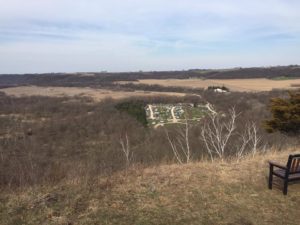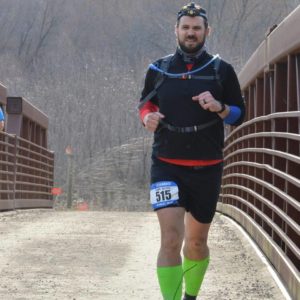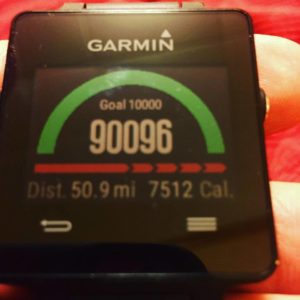I had intended to participate in this year’s Zumbro Endurance Run 17 miler, but a friend encouraged me to consider running the 50 miler as the night running and distance may be more in line with my goals for this season. He encouraged me to use this run to learn some lessons that I can take into the rest of the year, and the 100-mile world.
The course was a scenic pre-foliage tour of south-eastern Minnesota’s river bluff land. The 50 mile version (the race also has a 100 mile and 17 mile) was 3 loops with over 9,000 feet of climbing. I had been told this was a good early season race, but I wasn’t entirely prepared for the climbing. Coming off of a winter of wrapping up graduate school, and peaking my training at about 25 miles a week, this event was all about getting experience. I got it!

This isn’t really a race-report. As a project manager, I know the value of documenting “lessons learned” as soon as possible. I put together a pretty long Google Doc for my future reference, but I thought I’d publicly post some of them in the hopes that it may help others. There are also some questions in there. I’d love any thoughts left as comments below!

- Overnight running: The event started at midnight, and I really didn’t sleep much ahead of it. I was warned that there would be a low point. It came at about 4:30 am. I wasn’t fatigued from running… it was just way past my bed time. That was when I most wanted to quit.
- Sunrise: I was also told that the sun will fix all of that when it comes up… it did! I knew that in my head, but experiencing it first hand will help in future endeavors.
- Clean clothes and brushed teeth are almost as awesome as the sun for refreshing me.
- Salt supplements (SCaps, Endurolytes, etc) don’t sit well with my stomach. I need to find a different source of sodium.
- My body doesn’t like to eat between midnight and 5am. I need figure that one out.
- Ensure (Vanilla) is my new best friend.
- Any time lost caring for my feet, is made up for in capacity later.
- My Garmin Vivo Active (non HR) lasts 9 hours with vibrations turned off.
- It takes 2 hours to charge it with my Anker Astro E1 5200mAh charger. It didn’t even use up 25% of the Anker’s capacity to recharge. The entire cycle was 11 hours.
- It didn’t bother me to run with my watch plugged into a charger.
- Lithium AA batteries are lighter than traditional batteries, and made my headlamp lighter.
- Do I need backup batteries AND a backup light? Or could I get away with the latter?
- Ginger Ale is the best
- So are orange smiles
- I didn’t mind the loops.
- When fatigued, I adopted a 1/1 shuffle/walk ratio. Switching every minute. Watching the clock was tiresome. It’s a good duty for a pacer.
- Poles looked nice when I saw others using them late. I’ll have to ask some seasoned friends for their opinion. Helpful? Or in the way?
Finally, there was nothing better than seeing close friends and family. I got through the 2nd of 3 loops just in time to see the 17 mile race begin. My wife, and some of my running friends were getting started. They were all able to encourage me and that was a huge help. I also saw my wife at a shared aid station later in the course. Nothing got me going more than those encounters. I think a good crew will really help me.

